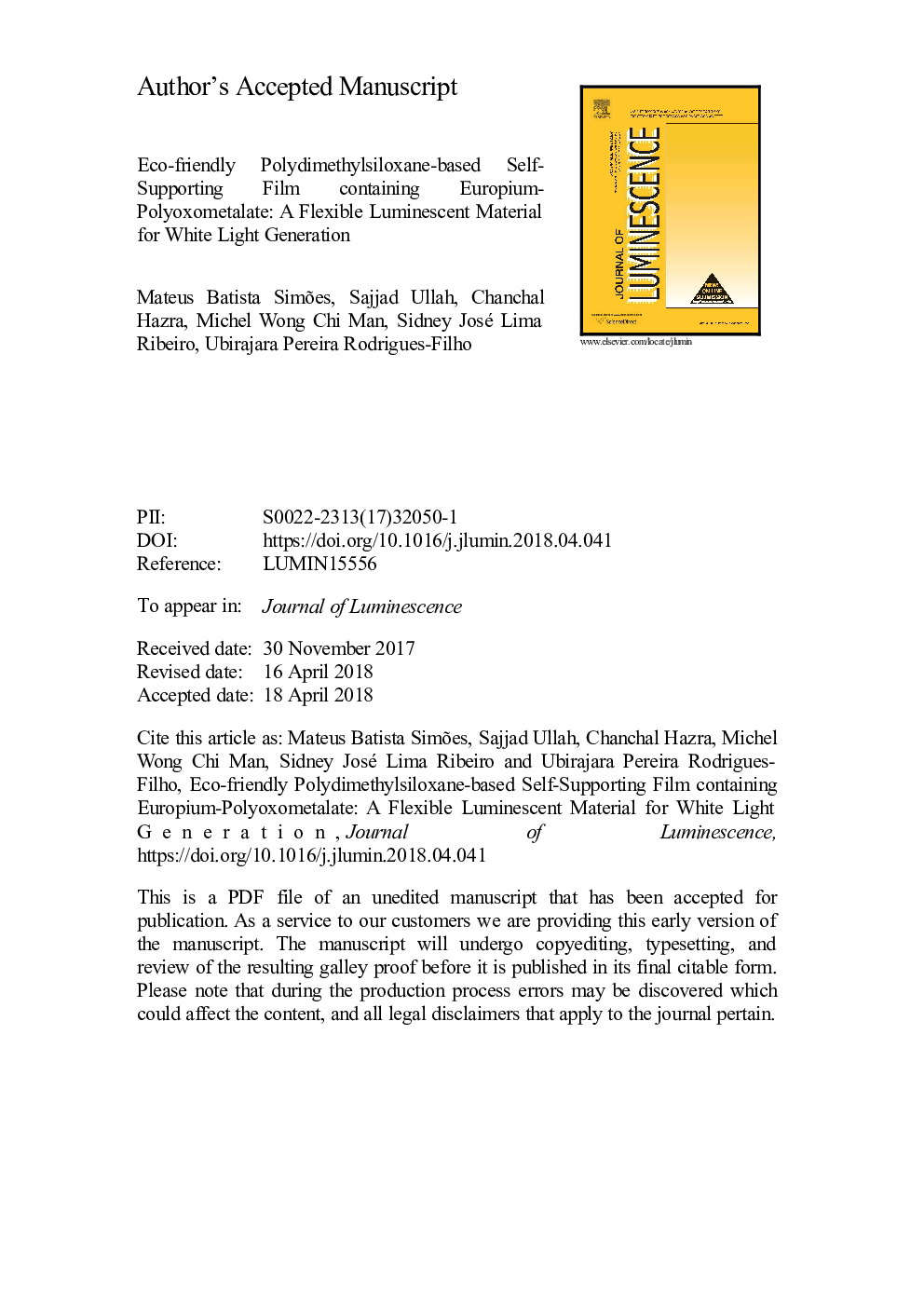| Article ID | Journal | Published Year | Pages | File Type |
|---|---|---|---|---|
| 7840025 | Journal of Luminescence | 2018 | 16 Pages |
Abstract
Lanthanide (Ln3+)-doped suitable matrices exhibit unique luminescent properties which are important for applications in optoelectronic devices. Most of the Ln3+-based luminescent materials are, however, prepared in powder form using suitable robust inorganic host matrices. These matrices, often, experience lack of flexibility which is important for many applications such as LEDs and wearable devices, among others. To address this aspect, we report the preparation of flexible and highly transparent luminescent membranes based on polydimethylsiloxane-hydroxyurethanes (PDMSUr) as the hybrid framework and Europium-polyoxometalate (Eu(PW11)2) complex as the luminescent component. The PDMSUr, besides acting as green, transparent and flexible matrix, is found to increase the emission decay lifetime (from 1.5â¯ms to 3.0â¯ms) when Eu(PW11)2 is incorporated in the hybrid matrix. Moreover, upon UV excitation, the matrix exhibits a broader emission around 450â¯nm which, together with the characteristic emission of Eu3+ ions, leads to the generation of white light.
Related Topics
Physical Sciences and Engineering
Chemistry
Physical and Theoretical Chemistry
Authors
Mateus Batista Simões, Sajjad Ullah, Chanchal Hazra, Michel Wong Chi Man, Sidney José Lima Ribeiro, Ubirajara Pereira Rodrigues-Filho,
